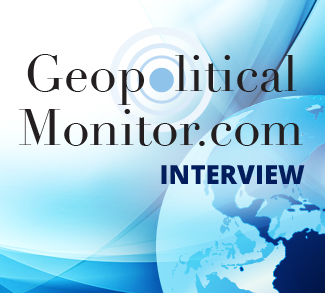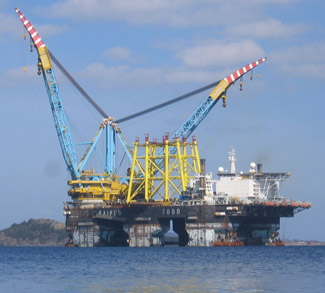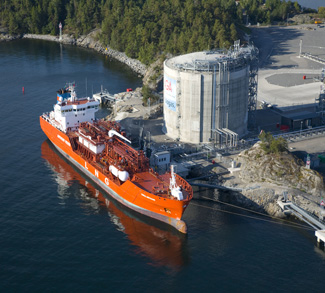Geopoliticalmonitor.com’s Jeremy James sits down with Anders Marvik, Vice President of EU Political Affairs Office at Statoil, to discuss the geopolitical risks and opportunities facing Statoil and the wider energy industry in 2017.
What is the biggest geopolitical risk facing the energy industry today?
Geopolitics is hugely important for this business: it always has been, always will be, and if anything it’s going to become even more so going forward. It is difficult to pick any one risk in isolation. Indeed the major challenge facing Statoil (and the world) today is the combination of so many risks and uncertainties facing us at the same time. The accumulation of risk is just much greater than ever before, whether it’s on the technical side, the political side, or the security side
We are currently in what I would describe as an increased VUCA (volatility, uncertainty, change, ambiguity) world. In such a world, any industry is faced with lots of challenges, and the survivors will be those that are robust financially, have sustainable business models, are exposed to growing markets, and have diversified portfolios in term of geography, technology, and business models.
…And the most overlooked risk in the mainstream media?
There are too little resources (money and people) being put towards innovation/R&D that drives the technological solutions of tomorrow. One of the big risks here is focusing too much on what you can deliver at home and not what we need to deliver together as a global society. In the EU we have national plans and regional plans but we seem to constantly forget that this is a global problem that we need to deal with globally.
We have the Paris agreement. We agreed to it, we signed it, we even ratified it. Now that it has happened, I think the overlooked risk is how you turn that target and its promises into real policies and regulations that drive an actual response. An IEA (International Energy Agency) report that came out a few months ago states that if we’re going to have any chance of reaching the 2 degree Celsius target of the Paris agreement, we must triple investment in low-emission energy solutions.
So overall, the risk lies in the lack of investment in the entire energy system, which means we will undershoot any of the targets we have set for the world both in Paris and in the UN sustainable development goals. To underline this point; Bloomberg New Energy Finance just released a report on 2016 clean energy investments, which showed a drop globally of 18%.
What are some challenges posed by climate change to the industry?
Statoil supports the Paris Agreement and we are focusing our efforts on how to shape energy transition. In more specific terms, this is what we’re doing:
Gas:
- In a sustainable world, the world will need much more gas than it uses today.
- Power generation should be switched from coal to gas.
- Gas helps intermittent renewables by being a base load supply.
- Gas with carbon capture (CCS) has a place in the long-term energy mix.
Oil:
- Oil is vital for transport, food production, plastics, and products we all use every single day.
- More oil must be found and produced to compensate for existing fields’ declining production.
- The Norwegian continental shelf is a leader in carbon-efficient oil and gas production.
We are also active on many other fronts, such as the World Bank’s anti-flaring program and the OGCI (Oil and Gas Climate Initiative). Our CEO is also on the board of the UN sustainable energy for all program. Statoil was recognized externally both by CDP as being the oil and gas company most ready for climate change and from Corporate Knights as the #47 most sustainable company in the world.
How is Statoil responding to these challenges?
We’re working with policymakers and other stakeholders to understand the challenges ahead, helping find solutions on how to reach global targets in the best possible way, and playing the role of a partner for investments and innovation. Every step of the way, we’re trying to make sense of the VUCA world in order to give intelligent answers internally to the top management team, and externally to key stakeholders, on what the risks are and how best to deal with them.
Where are some of Statoil’s most promising recent discoveries taking place?
When it comes to recent discoveries, Norway has been doing quite well for both mature basins in the North Sea like the giant Johan Sverdrup field, and the Castberg field in the Barents Sea. The Sverdrup field is now being fast-tracked into production. It is a massive project and could in the end turn out to be one of the biggest fields in Norway.
Globally we have made some recent discoveries in offshore Canada (off of Newfoundland), Gulf of Mexico, Brazil, and quite significant gas discoveries in Tanzania.
On the exploration side going forward, we’re planning a very active 2017. Were we’re going to test quite a few new countries, although roughly half our or exploration wells for 2017 will take place in Norway.
What are some of the challenges to increasing Statoil’s market share in the EU?
It’s a very mature energy market, and in terms of economic growth and energy demand growth it looks pretty flat on all accounts. So I think for us the key is obviously to maintain market share. I think on the gas side even though demands are flat or slightly down, EU domestic gas production is declining rapidly so the import needs going forward will actually increase, which provides an opportunity for us.
On the renewable side we’re currently growing our offshore wind portfolio in the UK and Germany, and we see many more growth opportunities there and in other EU countries. In addition we are doing a large pilot project on floating offshore wind farm outside Scotland.
On the innovation and on R&D side we will have growing links to the European innovation community, the European commission programs, and academia going forward. We’re trying to solve many problems at the same time, so I think and hope that the innovation approach going forward is going to be more open. This is perhaps the area in which Europe really can and will get together, to create the solutions we desperately need to achieve the future global goals and targets.
When, if ever, do you think the EU will return to business-as-usual with regards to Russia?
It is fairly unpredictable to say with any kind of certainty, so I can only observe that they have just rolled over the current sanctions, although we don’t know if/when they are going to be tightened or released. We don’t know how Syria, or the refugee crisis, is going to evolve; we don’t know how the situation in Turkey and North Africa is going to evolve; and then there are the uncertainties in how the US/Russia relations will develop. There are just so many uncertainties playing out at the same time. These are challenging times, but it’s also an extremely interesting period in the sense that you need to make some hard decisions and try very hard to understand the environment you in which you operate.
How does Statoil want to position itself to cater to growing demand in the ASEAN region?
As a company we have a relatively small portfolio in Asia but then again if you look at most of the big oil and gas majors, very few of them have large Asian upstream portfolios. Obviously it’s going to be a growing market for energy going forward, and I think we are reaching out to those markets today and hopefully that effort will grow.
There’ are different ways to reach and serve those markets, and renewables will be one of the fastest growing areas. We’re growing in offshore wind, and area also testing out floating offshore wind, which in a country like Japan is the only kind of offshore wind they can use due to lack of shallow waters. The potential of floating offshore wind is much greater than normal, fixed offshore wind because the world won’t have enough shallow water to install enough fixed windmills. So to really scale up wind energy, you have to go to floating, and in that field we are leading.
So it always comes back to this: in the oil and gas segment, we are looking for solutions to be more carbon and cost efficient, and new technologies and solutions in a global market. It is exactly the same with renewables, cost competitive, look for new technologies and business models that can be scaled up to serve a global market.




